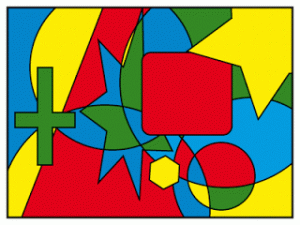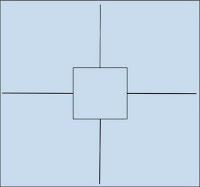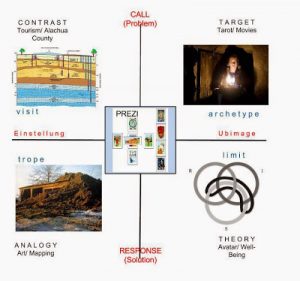Terms: Popcycle
 Popcycle. Learning is a complex adaptive system, and an aspect of what we are exploring is a certain isomorphism transversing all such systems. Heuretic pedagogy is describable within a systems perspective, beginning with the popcyle of institutions within which identity is constructed. Mystory (electrate equivalent of historiography) maps the position of a subject within the popcycle of institutions. The premise of heuretics is that there is an equivalent in learning of the four color theorem in mapping (choragraphy maps learning). “In mathematics, the four color theorem, or the four color map theorem, states that, given any separation of a plane into contiguous regions, producing a figure called a map, no more than four colors are required to color the regions of the map so that no two adjacent regions have the same color.” The analogy is that the four institutions of the popcycle suffice as interface relating a learner with every possible dimension of reality. This allusive argument is unpacked in subsequent posts, seeking further understanding, in configuring konsult as the mise-en-abyme of a popcycle.
Popcycle. Learning is a complex adaptive system, and an aspect of what we are exploring is a certain isomorphism transversing all such systems. Heuretic pedagogy is describable within a systems perspective, beginning with the popcyle of institutions within which identity is constructed. Mystory (electrate equivalent of historiography) maps the position of a subject within the popcycle of institutions. The premise of heuretics is that there is an equivalent in learning of the four color theorem in mapping (choragraphy maps learning). “In mathematics, the four color theorem, or the four color map theorem, states that, given any separation of a plane into contiguous regions, producing a figure called a map, no more than four colors are required to color the regions of the map so that no two adjacent regions have the same color.” The analogy is that the four institutions of the popcycle suffice as interface relating a learner with every possible dimension of reality. This allusive argument is unpacked in subsequent posts, seeking further understanding, in configuring konsult as the mise-en-abyme of a popcycle.
 –Mandala. A basic diagram (popcycle mandala) is used consistently throughout KE to map and correlate correspondences across the layers and levels of the popcycle-mystory-wide image as Interface for the Stack of digital civilization. The diagram is not original, but is appropriated from various fourfold system templates. The diagram below registers the CATTt of a seminar documented in Ulmer’s blog, Routine, which includes extensive exposition of CATTt generators.
–Mandala. A basic diagram (popcycle mandala) is used consistently throughout KE to map and correlate correspondences across the layers and levels of the popcycle-mystory-wide image as Interface for the Stack of digital civilization. The diagram is not original, but is appropriated from various fourfold system templates. The diagram below registers the CATTt of a seminar documented in Ulmer’s blog, Routine, which includes extensive exposition of CATTt generators.

